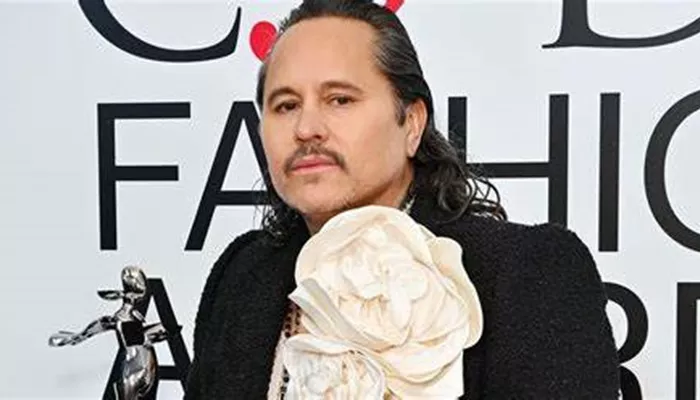Willy Chavarria may be a graduate of San Francisco’s Academy of Art University, but he’s recently become associated with the New School.
Ahead of receiving the Table Award at the Parsons Gala next month, the designer took part in the New School’s “Moving Fashion Forward” series on Wednesday with luxury consultant and former Barneys senior vice president Julie Gilhart.
Unlike most panels, this one began not with words but with visuals. Chavarria’s Fall 2024 collection, Safe From Harm, was projected onto the walls of Tishman Auditorium, showing a variety of models wearing his Western-style Chicano streetwear, strutting down the hallways of abandoned houses and dancing in the pews of a Catholic church. The film, which celebrated inclusivity, queer expression and Chavarria’s Mexican-American roots, set the tone for the evening’s event, which then explored the challenges and lessons he’s faced while scaling a brand built on those values over more than a decade.
Chavarria says strong visuals like “Safe From Harm” or his 10th anniversary show at Paris Men’s Fashion Week in January are the best way for him to get his political message across. “It’s like feeding people spinach, but putting it in burritos,” the designer joked, making them more palatable.
Gilhart is convinced. Before the two took the stage, she reminisced about her first meeting with Chavarria. “I didn’t understand it, but I loved it,” she recalled of the clothes, adding that Chavarria’s blend of “cultural authenticity and high fashion” was what caught the businessman’s eye. Ten years on, Gilhart is curious about how the two-time CFDA Menswear Designer of the Year got to where he is today.
Again, it’s about the visuals. Born in Fresno, California, to a working-class immigrant family, Chavarria grew up introverted, “which made me a very visual person,” he says. “I was always drawing and always dreaming, imagining a world that was very different from the one I was in at the time.” With his community absent from the pages of fashion magazines, he eventually began to work on social justice causes and give voice to it through his work. “I wanted to act in a way that promoted what I believed in, and gave value to people who weren’t seen as worthy,” he continues. “I guess that’s why I like to elevate my Latin culture and make it as beautiful as possible, because I really had never seen it like that.”
When asked if he felt pressure to minimize conversations with marginalized groups in order to drive growth, Chavarria responded, “Whether it’s the left or the right, I think most brands are afraid of losing one side, so they choose to play it safe, but then it’s boring.”
Gearhart then posed the question to the crowd to see if they agreed that fashion right now is indeed boring. The room was filled with laughter when the vast majority raised their hands. Chavarria went on to make it clear that being boring means nothing to him, and in divisive times, “you have to be courageous.”
Having worked for commercial giants like Ralph Lauren and Calvin Klein (something he strongly advises Parsons students to do before striking out on their own), Chavarria has proven that “you can have a point of view, you can do something very genuine, and not be assimilated to what you think you have to do to be successful.” He noted that failure shouldn’t be discouraged because it’s an opportunity to learn. “You have to fall and then stand up again.”
Chavarria admitted that he’s still learning how to communicate with buyers who aren’t sure how to categorize his gender-fluid philosophy. While menswear is his specialty, Chavarria hinted that he’d like to launch a line specifically catering to women, which he’ll do when the time is right. But Willy Chavarria’s world is and always will be for everyone: “Whether it’s male or female, queer or trans, the most important theme is love,” he said.

